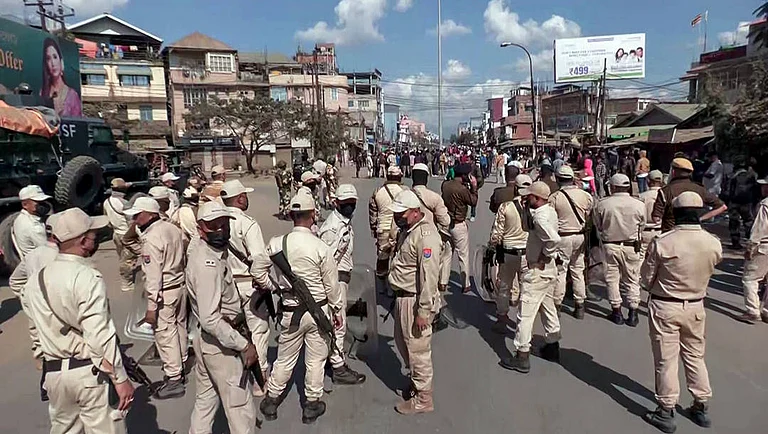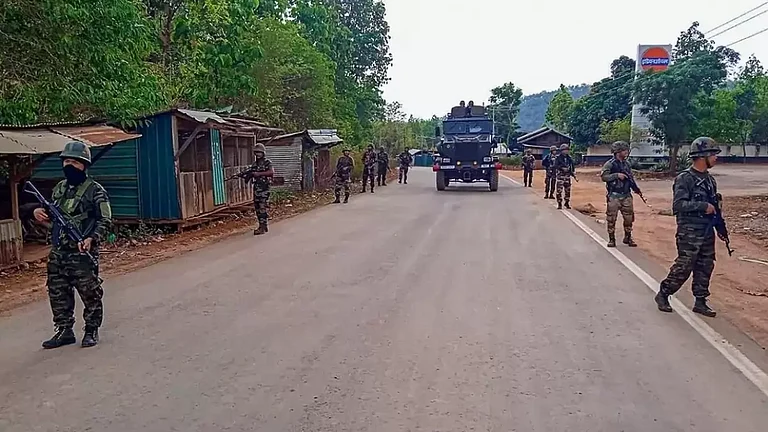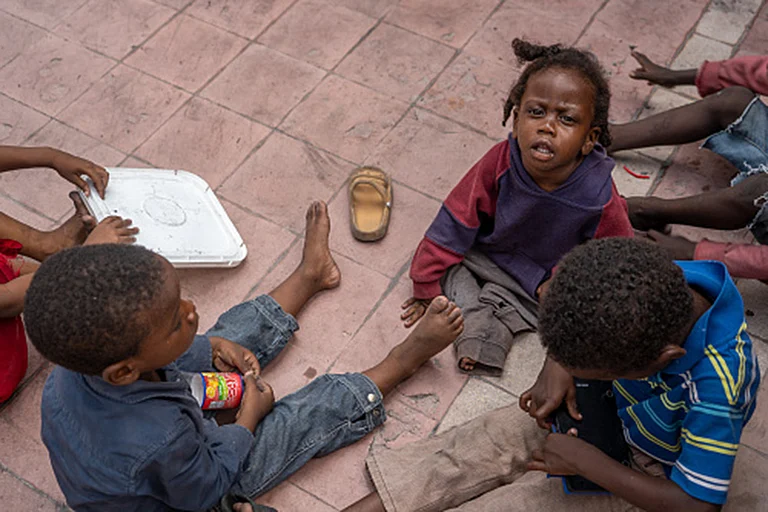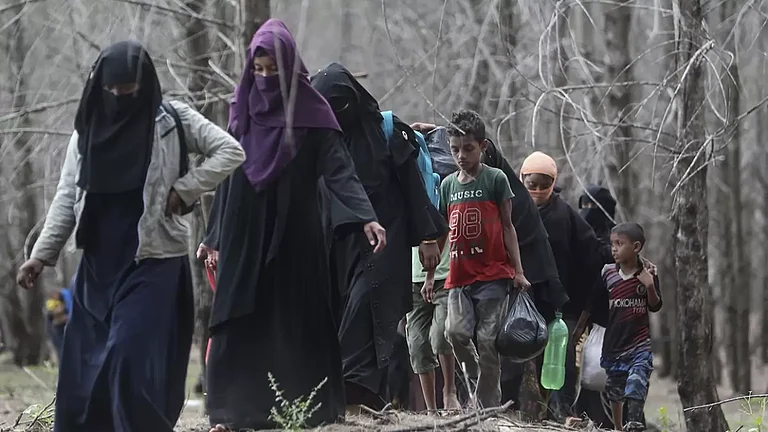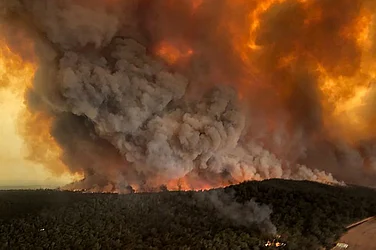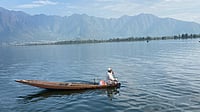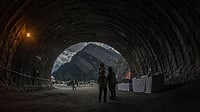More than four-years after the 2021 military coup, Myanmar remains locked in a deepening crisis marked by civil war, mass displacement and and international neglect. Over 35 lakh people have been uprooted, and much of the country now lies beyond the junta’s control. The military’s attempt to legitimise its rule through a flawed electoral process later this year has been widely dismissed, while the opposition National Unity Government (NUG) continues to rally fragmented resistance across ethnic lines. The devastating earthquake in March further exposed the regime’s failures and the limits of foreign assistance.
Continued scrutiny of Myanmar is particularly important, particularly in the Global South. The nation represents a textbook case of post-colonial crisis, where the military, an institution that might have unified a diverse population, instead became a driver of fragmentation and authoritarianism. At the core of Myanmar’s current over four-year-long crisis lies a profound informational void, clouded by a deluge of conflicting narratives. Gaining a clearer understanding of the country requires an informed grasp of the military’s structure, mindset and evolving dynamics. The past casts a long shadow on the present, with many of the military’s enduring anxieties rooted in unresolved historical legacies.
Certain underexplored elements of the military are crucial to understanding the current political stalemate. Myanmar’s decades of well-intentioned isolation enabled deeply entrenched ideas within its power structure to endure. The military, or Tatmadaw, is emblematic of this dynamic: insular and opaque, it briefly embraced a decade of progressive reforms that many believed were irreversible in the last decade. However, as international criticism over the Rohingya crisis mounted in 2016 and 2017, the military quickly retreated into its old shell. The outside world remained largely unaware of the internal deliberations and anxieties driving decisions within the military establishment.
One of the enduring mysteries for Myanmar watchers remains why, despite its most well known leader Aung San Suu Kyi’s vigorous international defense of the military, including at the International Criminal Court (ICC) on December 11, 2019, it still refused to allow her and her party to govern for a second term. Whether this was driven by the personal ambitions of the military chief or a collective decision by senior generals to stage a coup remains unknown. The difficulty in understanding the Myanmar military stems largely from a lack of reliable information and deep knowledge about its inner workings. Gaining meaningful insight into its rationale and behavior requires discreet, long term engagement.
A more accurate assessment of the Tatmadaw also demands comparative analysis with other countries that have experienced prolonged periods of military rule. By contrast, militaries in countries where the armed forces have played a dominant role such as Turkey, Egypt, Pakistan and Indonesia developed significant ties with foreign powers during the Cold War and beyond, shaping their global engagement in the modern era.
Indonesia’s armed forces have made substantial contributions to United Nations peacekeeping missions, boosting their international profile and operational capabilities. The same way Pakistani military makes substantial contributions to UN peacekeeping missions. Because of geography and other factors, it has a close relationship with the Pentagon.
Beyond its prominent role in Afghanistan alongside the United States in the 1980s and first-two decades after 9/11, senior Pakistani military officers often serve in the Middle East. General Zia, who was the Pakistani President for a decade after a coup, was stationed in Jordan from 1967 to 1970 as the head of a Pakistani training mission to Jordan.
In 2017, former Pakistani army chief General Raheel Sharif, after his retirement, was appointed as the commander of the Islamic Military Counter Terrorism Coalition, a 41-nation alliance based in Riyadh, Saudi Arabia. The Egyptian army had its own equities with Pentagon and the same can be said of the Turkish army in the context of NATO.
In contrast, the Tatmadaw remains largely inward looking, with no involvement in multilateral security frameworks or peacekeeping operations. Given its tarnished human rights record, Myanmar’s inclusion as a troop-contributing country (TCC) in UN peacekeeping was always unlikely.
However, during the reform period (2010-16), the military leadership did express interest in participating as a TCC to the UN headquarters. To be a TCC to UN peacekeeping operations, a country must meet several guidelines and requirements set by the UN Department of Peace Operations.
The Myanmar army’s rigid command structure restricts the flow of information, while state-controlled media offers only a narrow and curated narrative of the regime’s actions. This persistent lack of transparency leaves international observers with little more than conjecture and severely hampers effective diplomatic engagement.
In early 2025, senior general Min Aung Hlaing reportedly orchestrated a sweeping reshuffle of both the military and the cabinet. Younger officers were elevated, while older, more senior commanders were sidelined mirroring the succession strategy once employed by former junta leader Than Shwe.
Some of the generals had been part of the international engagement during the shortlived reform period. Immediately after the coup, General Hlaing had effectively neutralised potential dissent, particularly from ex-generals who had gained international favour for their earlier reform efforts. One by one, each eventually came out in public support of the coup.
On the ground, little is expected to quickly change, as the command and control structure of the military is still intact. At least 40 per cent of the country’s territory is outside the grip of the military. There are pockets of resistance even within the ethnic Bamar heartland that forms the majority of the country.
While it is difficult to predict the future with pinpoint precision, there are enough clues in Myanmar’s history, geography, demographics and external influences that help understand the trajectory of the combat that has gone on for the last four years.
The claims made by the NUG must be viewed with caution, as much of the territorial gains stem primarily from the advances of ethnic armed groups rather than from the NUG’s own military strength.
In this context, the seminal work of late scholar James C Scott in his book, The Art of Not Being Governed: An Anarchist History of Upland Southeast Asia, (Yale Agrarian Studies, 2009), provides a framework to understand the current conditions.
He had suggested that chronic instability in some parts of the Southeast Asia is not merely political, but structural and historical, rooted in the very geography and social diversity of the country. He had introduced the concept of "Zomia", a term for a vast highland region of Southeast Asia, including parts of Myanmar, Laos, Thailand and Yunnan, where people have historically resisted incorporation into centralised states.
Much of northern and eastern Myanmar fall within this region. The ethnic minorities in these upland areas (Shan, Kachin, Chin, Karen, etc.) have intentionally maintained statelessness, using geography, mobility and cultural practices to avoid state control.
This has direct relevance to Myanmar, where civil wars and insurgencies have been most intense in these very areas. Scott viewed state-making in Myanmar (and elsewhere) as a coercive project aimed at taxation, conscription and control.
To extrapolate this thesis, the Burmese military, in his framework, would be an archetype of a lowland state trying to dominate autonomous hill populations, often through violence and displacement.
In countries like Myanmar, ethnic diversity is often publicly celebrated and showcased in museums and official events as a source of national pride. However, beneath this veneer lies a persistent pattern of patronisation by the Burman majority towards ethnic minorities. Stereotypical portrayals of these communities by Burman military elites remain common.
Military-led development initiatives such as dam construction and forced relocations are frequently justified through a state-centric narrative of bringing progress and governance to remote regions. Yet, these projects often come at the cost of local autonomy and ecological well-being.
This dynamic helps explain why many ethnic groups have historically chosen to preserve a degree of independence rather than submitting to the central state’s administrative control.
The NUG has consistency aimed to set the narrative internationally. It claims big gains in territory as it performs the coordinating role between ethnic Burman-dominated People’s Defence Forces (PDF) and ethnic armed groups of the minorities, which form one third of the country’s population.
However, there is credible evidence that some of the most successful resistance operations have taken place in ethnic minority areas, which together constitute over one third of the country’s landmass. Nevertheless, it goes to the credit of the NUG that it laid out a political vision for a federal and democratic Myanmar, seeking to bring ethnic groups under a more inclusive framework.
At the same time, support for the NUG and its activities is likely to face growing challenges. In 2024, the United States Congress approved a $167 million aid package for Myanmar, which included $75 million for cross-border humanitarian assistance and $25 million in “non-lethal” support for ethnic armed organisations and the PDF.
However, by March this year, support for Burmese refugees in Thailand and exiled civil society groups was discontinued. Following a devastating earthquake in Myanmar, a US humanitarian team arrived late, only to receive termination notices during their mission.
By June, Myanmar was among 12 countries placed under US visa bans, signaling escalating tensions. Yet, covert communication channels with junta officials, including Foreign Minister Than Swe, once Washington’s envoy, may still be open. General Min Aung Hlaing, who is desperate for international recognition, promoted Than Swe to Deputy Prime Minister in 2024, positioning him as a key interlocutor between the regime and the international community.
In a surprising development, Myanmar’s junta leader Min Aung Hlaing revealed on July 11, 2025, that US President Donald Trump had sent him a letter proposing a 40 per cent tariff on Myanmar’s exports to the US. Framing the outreach as an “encouraging invitation” for engagement, Myanmar’s state media reported that the general responded by proposing a reduced tariff of 10 to 20 per cent and offered to lower Myanmar’s own tariffs on US imports to between zero and 10 per cent.
Signalling openness to dialogue, Min Aung Hlaing also expressed readiness to dispatch a negotiation team to Washington. The publicising of the exchange, while informal, underscores the junta’s attempt to gain legitimacy and access amid international isolation.
International efforts to mediate or apply pressure whether through ASEAN initiatives or UN resolutions have so far been unable to shift the military’s calculus. Meanwhile, humanitarian needs continue to rise, with millions displaced and widespread violations of human rights reported across the country.
At a time when the international community’s bandwidth to address complex cross-border political instability and humanitarian crises is severely limited, a deeper challenge also looms for the opposition: its symbolic leader, Aung San Suu Kyi, the long-time icon of Myanmar’s democratic aspirations and political reform turned eighty in June. Her incarceration this time around has failed to evoke sympathy as it did earlier as her reputation has taken a hit in recent years due to perceived inconsistencies on human rights issues, particularly over the Rohingya crisis.
In this conundrum, the Rohingya crisis has become even more entangled. As of mid-2025, the plight of the community remains dire. More than ten lakh continue to live in overcrowded refugee camps in Bangladesh, with limited access to education, healthcare and sources of livelihood.
Recent escalations in Myanmar's Rakhine State, especially between the Arakan Army and the military junta, have triggered a fresh wave of displacement, forcing thousands more to flee.
Efforts at repatriation remain stalled due to insecurity and the lack of a clear path to citizenship in Myanmar. Meanwhile, regional responses have been tepid, and international attention has waned, leaving the Rohingya stateless, vulnerable and with diminishing prospects for a dignified return.
Myanmar remains a battleground of many dimensions, offering a stark warning to the Global South. In the absence of timely political accommodation and a shared vision of citizenship rooted in ethnic, religious and linguistic equality, the military has repeatedly exploited internal divisions to retain power with impunity.
While the NUG and ethnic armed groups seek to project a narrative of unity through digital platforms and diaspora networks, deep-rooted historical grievances, persistent internal fissures and limited international bandwidth, diverted by other global crises, continue to cast a long shadow over Myanmar’s present.
As the international community grapples with restricted access, fragmented narratives and competing claims, it is the country’s diverse peoples who continue to bear the brunt of this prolonged and opaque conflict.
(The author has worked for 25 years as a practitioner, researcher and analyst on conflict areas and violent extremism issues. He was a former member of the United Nations Secretary-General’s Good Offices on Myanmar.)








